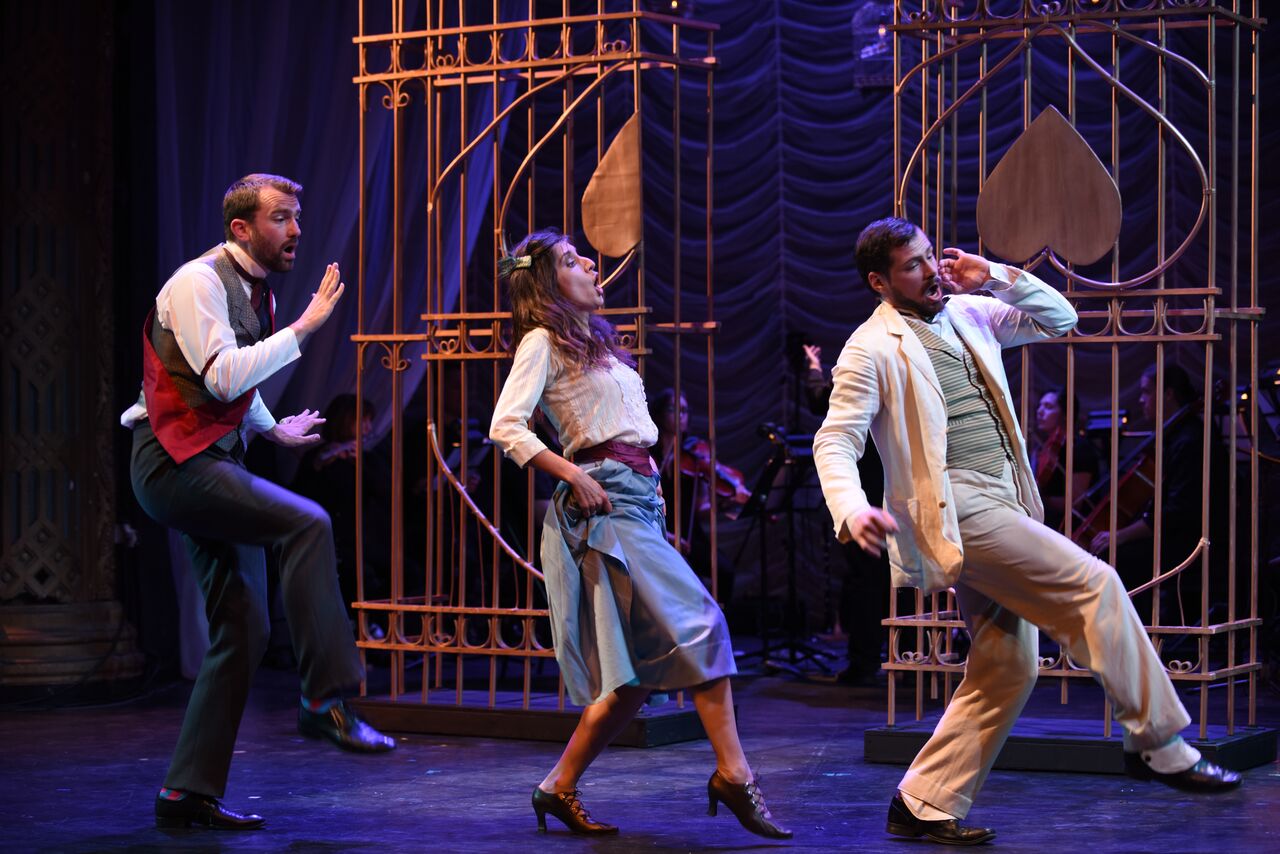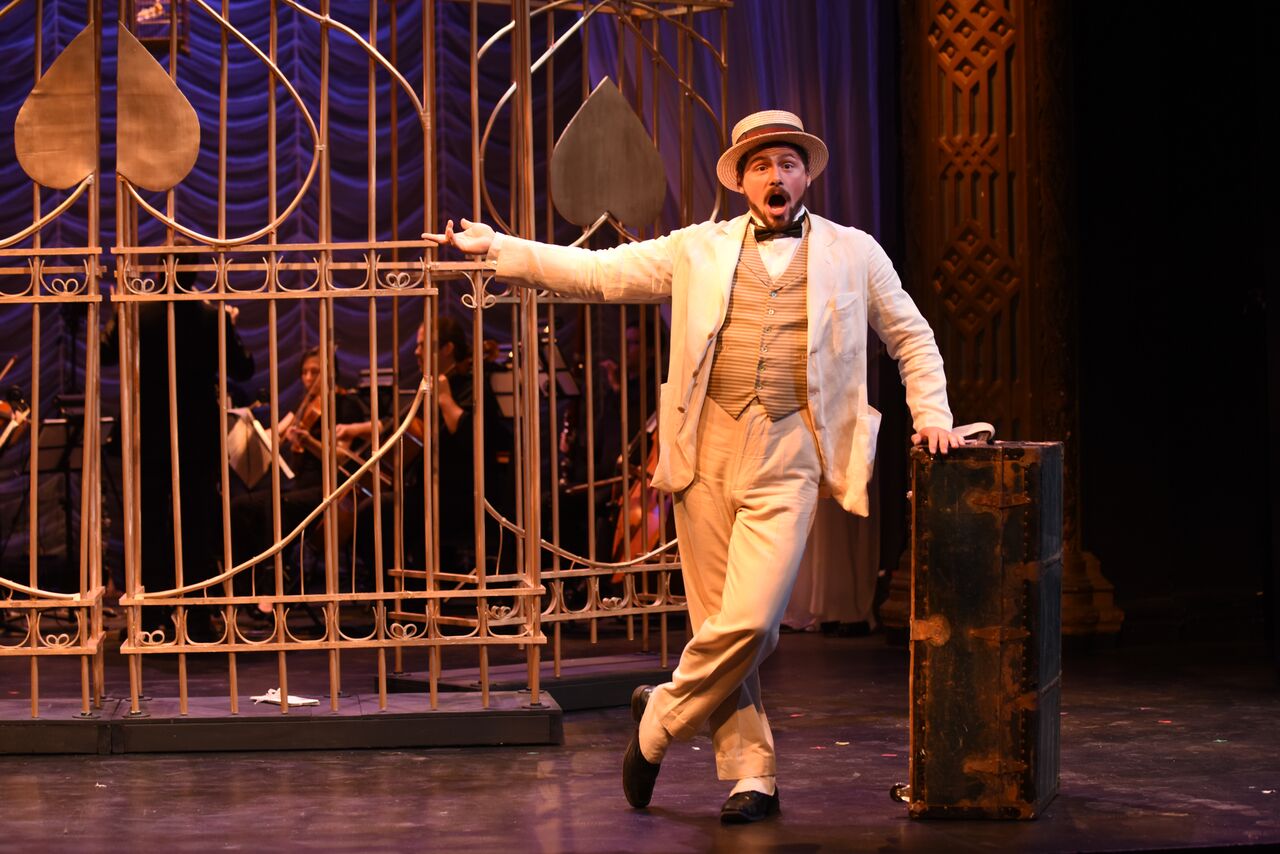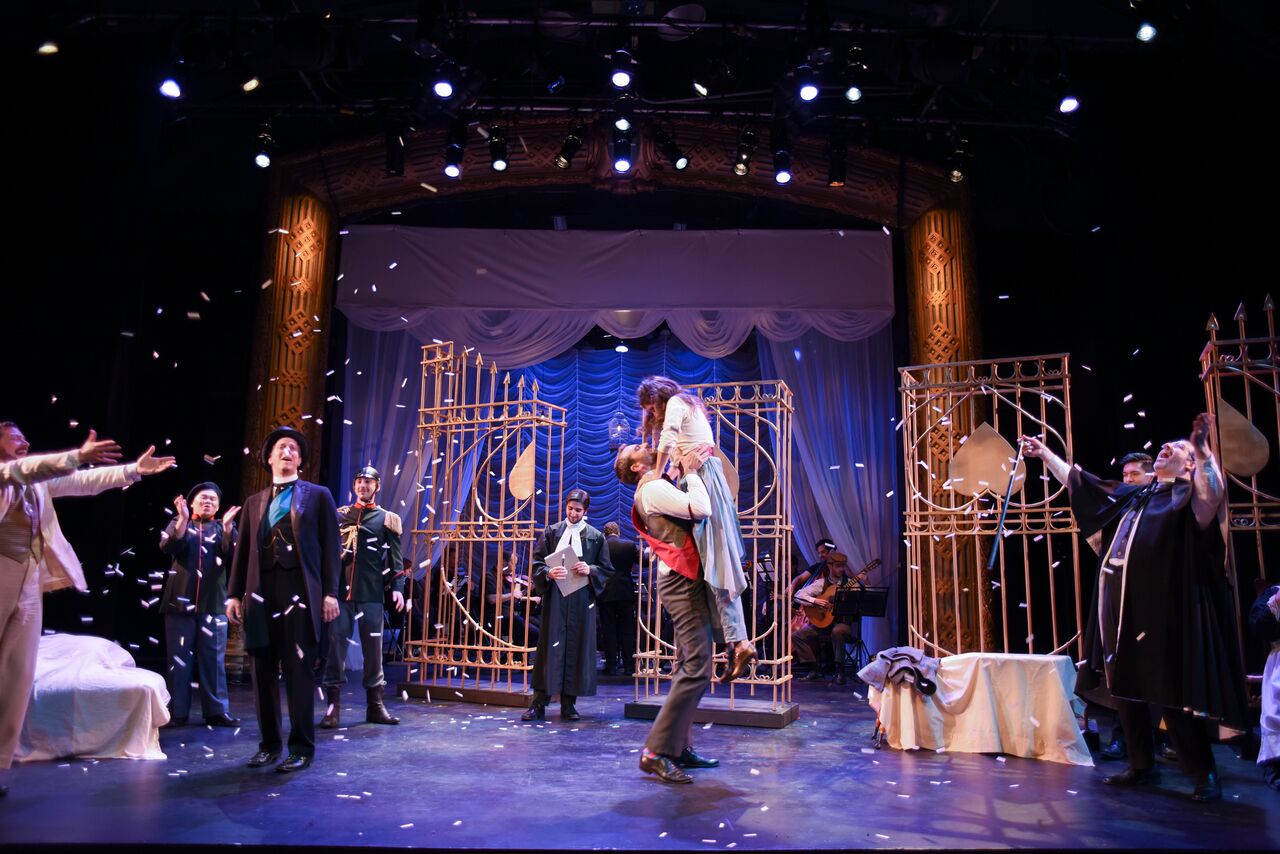Opera 5’s new production of Rossini’s Il barbiere di Siviglia (seen Jun. 13) proves that a small, intimate space is all that’s really needed to stage the romantic comedy. Directed by Jessica Derventzis, its few set pieces and simple costuming allow the performances given by the talented ensemble to truly shine.
Leading the troupe and moving the story along was the Barber of Seville himself, Figaro, played with great charm by baritone Johnathon Kirby. He delivered some of the fastest lines of the opera clearly and pitch-perfect, and his “Largo al factotum” was a powerhouse introduction. Kirby’s take on Figaro earned most of the night’s laughter, and his total command of the stage made it impossible to look away from him—even when important dialogue was happening centre stage and he was ‘hidden’ off to the side.
As Count Almaviva, tenor Kevin Myers goes through a lot in the two-hour opera, In Act I, he is desperate to see Rosina and clearly at odds with what to do with Figaro until the Barber reveals that he knows the girl and her household. Myers delivers a hilarious Don Alonso (disguised as his love’s music master) in Act II, and his identity reveal to Rosina is a sweet moment for both. His clear voice was well-suited to the role, although he shone most when singing softly.
Rosina, the fireball beauty who’s caught the Count’s eye as well as her guardian Doctor Bartolo’s, is performed by mezzo-soprano Stephanie Tritchew. In “Una voce poco fa,” she shines in both voice and her admission of love for Lindoro, while still holding on to what independence she has. As Bartolo, baritone Jeremy Ludwig succeeds in making the audience dislike the weaselly doctor and his plot to marry his own ward, nailing his performance with a slimy take on the powerful figure.
Megan Miceli was a scene-stealer as Berta, the old governess, who shuffled around the stage with all the attitude of a tired grandmother. Her “Il vecchietto cerca moglie” made use of the whole stage and the props left askew from the previous scene. Her Berta proved to be one of the funnier performances of the evening. In the opening scene, baritone Danlie Rae Acebuque delivered a sharp and funny Fiorello, which was key in setting the tone of the show.
The intimacy of Factory Theatre allowed the singers to add small details to their performances that could still be noticed by audience members seated in the rear orchestra. The inclusion of sighs, scoffs and spluttering from the entire cast helped bring their characters to life. Asides were funny throughout—especially by Kirby, who was usually the voice of reason whenever Almaviva and Rosina were together. His frustration with the two during the elopement scene was apparent, and even when the young lovers finally kiss in the finale, Figaro’s leap into Bartolo’s arms stole the scene.
Costuming and set design in the show is kept simple. Production Designer Erin Frances Gerofsky’s use of basic set pieces and a moving, four-piece gate helped to tell the story efficiently. Choreography throughout was well-executed, be it in the Act I fight scene or the storm scene. Both used ‘slow motion’ movement to add even more drama, and Lighting Designer Jennifer Lennon’s work during the storm was impressive.
Conductor and Music Director Evan Mitchell did a great job of pacing the show, although there were moments where the orchestra drowned out singers. The Overture was led and performed beautifully, and the incorporation of props and practical sound effects throughout was successful.
Opera 5’s production of Il barbiere di Siviglia is a simple and successful adaptation. By using the small theatre space to their advantage it was easy to be drawn into the story, and the cast breathes new life into some of the most well-known characters in opera.













